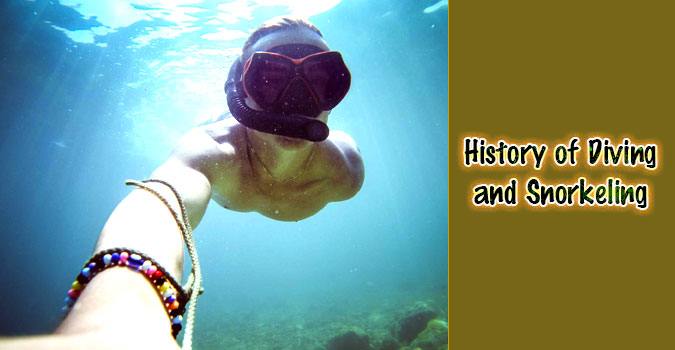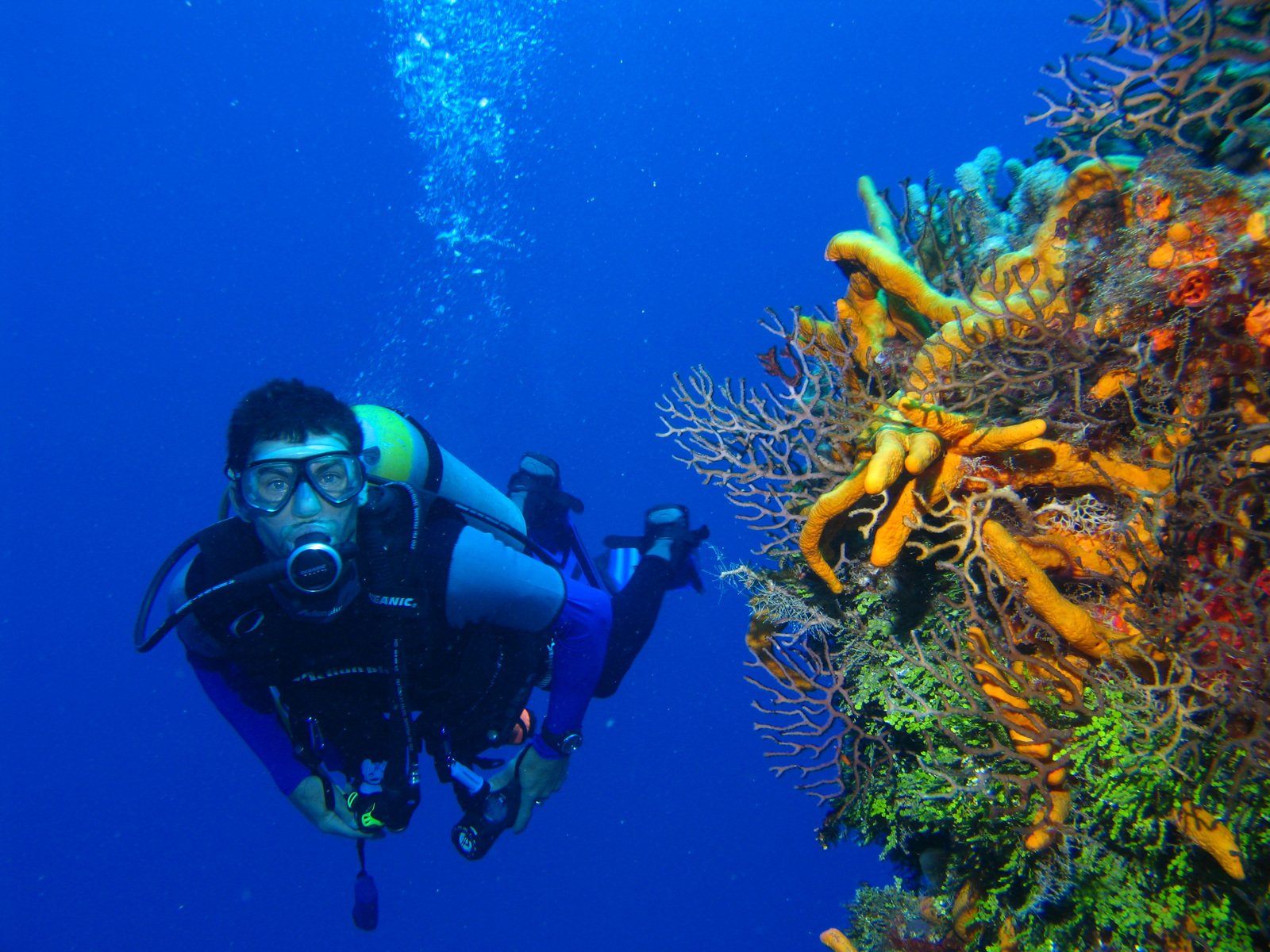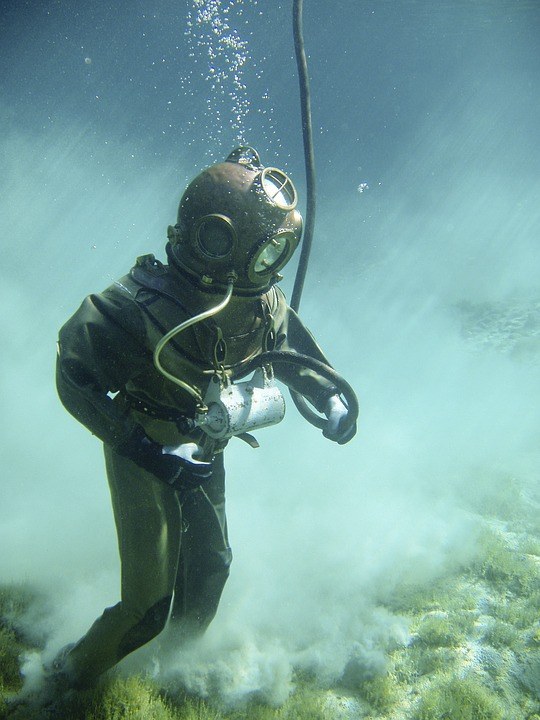Diving is an act where a person plunges headfirst into the water while snorkeling is swimming underwater using a diving mask with a breathing tube attached which is called a ‘snorkel’. These are two of the water activities that people enjoy when visiting the beach and island destinations. But did you know that during the ancient times, people dove into the ocean and snorkeled for a living?
People from Mesopotamia, around 4,500 years ago, used to dive into the ocean to collect food and pearl oysters. This practice was followed by the Greeks and the Chinese. As early as 1000 B.C., the Greeks also practiced “sponge diving”. Unlike today the sponges we use are mostly synthetic, in the ancient times, sponges were high quality and are collected from the ocean. Sponge fishermen would dive to almost 100 feet (30m) deep into the sea. They did this by holding a heavy rock when they dove to pull them down faster. When they reached the bottom, they would cut as many sponges as they could before cutting the rock off and being pulled back up.
Also, during ancient times, divers did not have any concept of the middle-ear and keeping pressure equalization. Based on Boyle’s law, the volume of gas in the ear should be constant and equalized to maintain pressure. Since there is greater pressure in the deeper parts of the ocean, more gas should be added to the middle ear to keep the pressure on the ear stable. This will prevent the eardrum from bleeding and being ruptured.
What the divers did in the ancient times was they poured oil into their ears and took a mouthful before diving to help prepare the ears for the dive. Then they would spit it out when they reach the bottom of the ocean. Imagine how difficult it is to earn a living in these times. In the present time, divers have learned different equalization techniques to let more gas in their ears before diving. Some of those techniques are yawning and wiggling the jaw.
Diving to collect pearl oysters, sponges and seafood has been practiced worldwide for many centuries. And did you know that in Japan early oyster divers were mostly women? This was because they believed that women have an extra layer of fat that can keep them warmer underwater. It was also believed that women can hold their breath longer than men.
There was also a salvage industry during the 1st century B.C. in the Mediterranean. People were paid to be “salvors” who would dive down to get salvage from a ship or items lost at sea. Their fees depend on the wreck. For example, if they dove into 25 feet or deeper, the salvor’s share will be half of all the goods that will be recovered.
Another question is how did the ancient people managed to stay underwater since they do not have modern equipment like we have today? In 900 B.C., divers used to bring animal skins that are filled with air when they dove into the ocean. This would allow them to stay submerged for a longer period of time by pulling air from the animal skin. Then, in 333 B.C., Alexander the Great invented the diving bell. This device keeps an air pocket in the main chamber when it is submerged in the water. This helped the divers breathe underwater without the need to resurface quickly.
When the 16th century came, Leonardo da Vinci in his famous notebooks designed a tubed underwater breathing apparatus which was the first concept of the modern snorkel. The device is made up of a hollow tube that is attached to a leather helmet. Part of his concept was also the diving suit and the webbed swimming gloves. Even Benjamin Franklin got into the act by developing wooden paddles for the hands and feet which would help divers to swim faster through the water.
By the mid-twentieth century, high pressured cylinders were already available and two systems for scuba had emerged. First is the open-circuit scuba, where the exhaled breath of the diver is directly vented to the water, and the closed-circuit scuba where the carbon dioxide is removed from the diver’s exhaled breath which has oxygen added and is recirculated.
Open-Circuit
The open-circuit was the first system that became popular to recreational divers because they are safer and less expensive. In 1864, French engineers named Auguste Denayrouze and Benoit Rouquayrol designed and patented a diving suit after they adapted and developed a pressure regulator for underwater use. This diving suit was the first one that could supply air to the diver by adjusting the flow of air from the tank to meet the breathing and pressure requirements of the diver. Though, this system still requires using surface supply, because the cylinders in the 1860s were unable to withstand the high pressures.
In 1925, Yves Le Prieur devised the first open circuit scuba system in France which was inspired by the simple apparatus of Maurice Fernez and called it the “Fernez-LePreiur” diving apparatus. It has consisted of a cylinder compressed air that is carried on the back of the diver which was connected to a pressure regulator adjusted manually by the diver. It has two gauges, one for the tank pressure and the other for the supply pressure. However, the use of LePrieur’s device was limited due to its lack of demand regulator, also known as the pressure regulator which reduces the pressurized breathing gas to ambient pressure and delivers it to the diver, and the consent low endurance of the apparatus.
Maurice Fernez also invented a nose clip, a mouthpiece, and goggles. However, the goggles were unusable when diving deeper than ten meters because of mask squeeze on the face. That is why in 1933, Le Prieur replaced all of this equipment with a full face mask.
When 1942 came, a famous French explorer named Jacques Costeau, and an engineer named Emile Gagnan, designed the first successful open-circuit scuba. This device automatically releases fresh air when the diver breathes. In 1943, they began selling it with the name “Aqua-Lung”.
Closed-Circuit
The alternative concept, which is the closed-circuit scuba, was developed almost the same time as the open-circuit scuba. It is also known as the “rebreather”. Since the body only consumes a small part of the inhaled oxygen, the rebreather recycles the exhaled breathing gas. In 1878 an Englishman named Henry Fleuss, designed and built the first commercially practical rebreather in London. It has consisted of a rubber mask that is connected to a breathing bag. It was first used in 1880 in the Severn Tunnel construction project. The problem of the hard hat divers who used it was the danger of their air supply hoses being fouled on submerged debris, and the strong water currents in the workings.
Fleuss added a demand regulator and tanks which could hold a greater amount of oxygen in high-pressure areas underwater which improved the apparatus. In 1910, the head of Siebe Gorman named Sir Robert Davis, where Henry Fleuss worked, improved the rebreather and it was intended to use as an escape apparatus for submarine crews in case of an emergency. Then, it was later on used for diving as well.
During the 1930s, the rebreather was used in the war. In 1939, U.S. Major Christian Lambersten invented an underwater free-swimming oxygen rebreather. He patented it in 1952 and named it SCUBA (Self-Contained Underwater Breathing Apparatus). Though, the downside of the rebreather is the depth where it can be used is limited because of the high percentage of oxygen it uses. Since pure oxygen is toxic, using the rebreather is only limited to a maximum of 20 feet underwater. Because of the risk of oxygen toxicity, its use was stopped in recreational diving. On the other hand, they are extensively used for military attack swimmer applications because it’s lightweight and compact, and military swimmers are not required to dive greater depth.
In the 1980s, the rebreather was revolutionized because of the development of oxygen sensing cells. This worked by measuring the partial pressure of oxygen accurately which made it possible to maintain a breathable gas mixture in the loop at any depth, avoiding oxygen toxicity.
As the years passed, SCUBA eventually became the generic name for both open-circuit and rebreather underwater equipment. A lot of high tech diving equipment has been introduced in the present time that allows us to explore the beauty of the oceans. It’s amazing to know that scuba diving and snorkeling started from thousands of years ago and is now practiced both commercially as well as by tourists worldwide.



